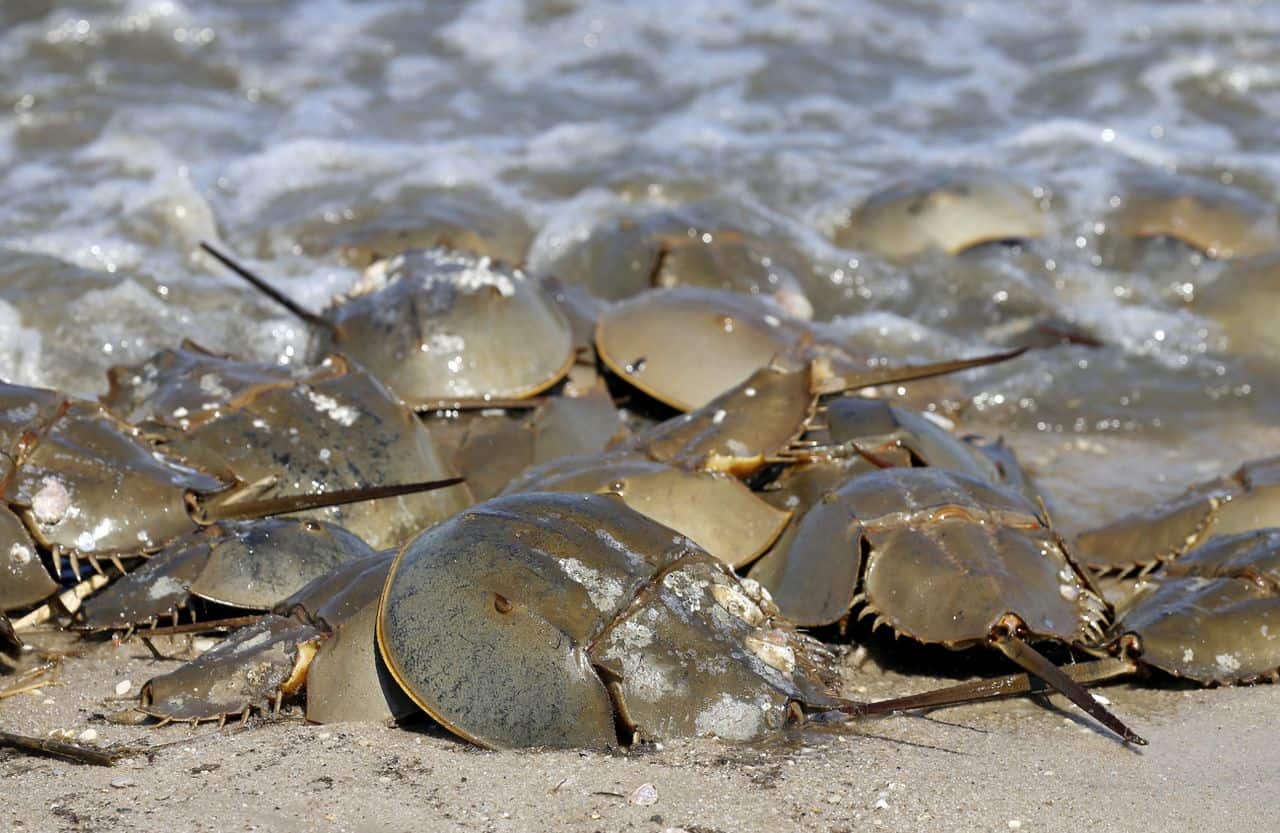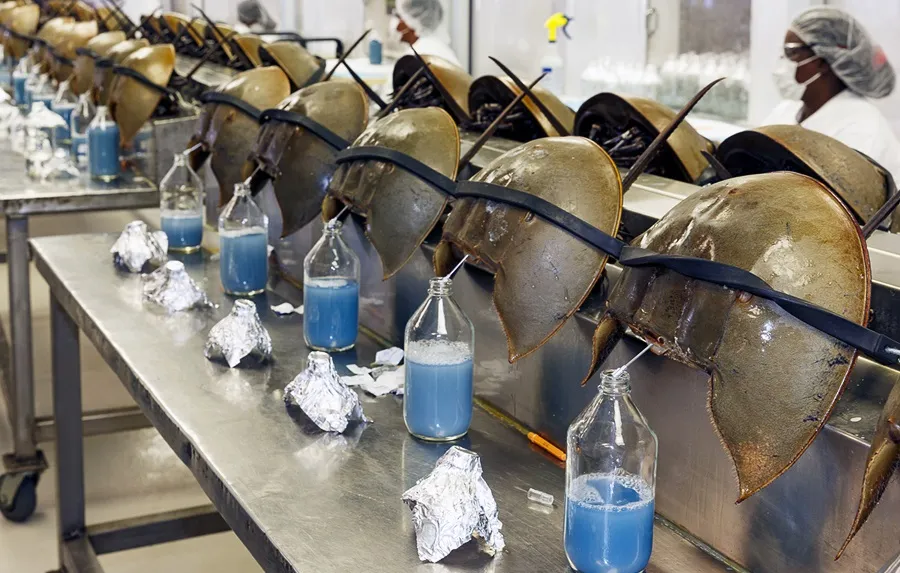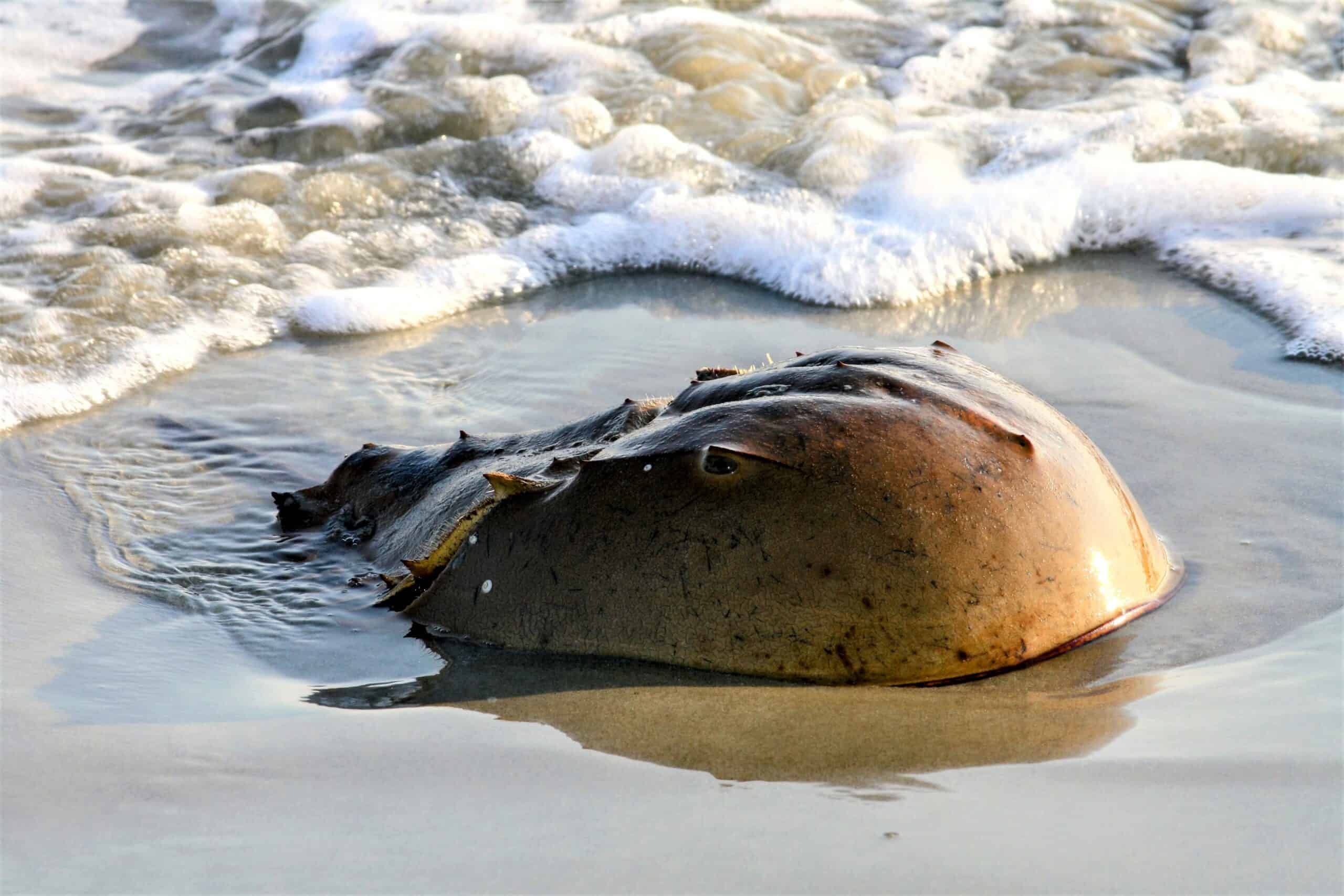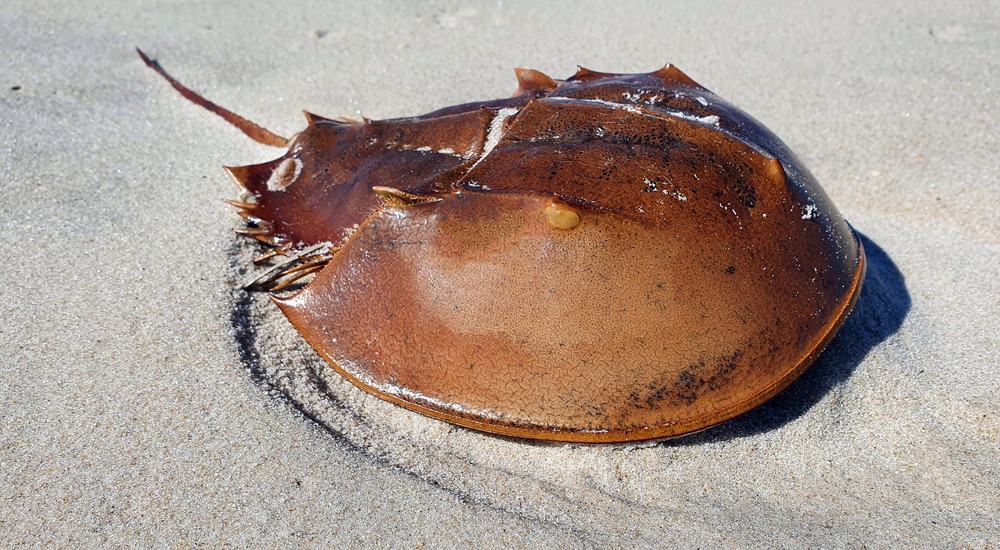Horseshoe crabs are very peculiar species that you may find on beach coasts. Their name comes from their familiarity with horseshoes. They have a round, prominent brownish shell that looks much like the horses’ shoes.
These creatures have a vital role in their habitat, several National Wildlife Service, and our society. Not only do they serve as food for other coastal and migratory animals, but they also have a valuable contribution to the medical science industry. If you want to know more about this, continue reading. We’ll show you interesting facts about horseshoe crabs and their value in society.
Horseshoe crabs facts
Despite what you may think, horseshoe crabs are more related to arachnids than crabs. This is a common confusion, especially due to their name. They are more related to spiders because of their body structure and legs.
It may seem impressive, but horseshoe crabs can actually see really well. Their shell/head has ten eyes and is highly sensitive to the world around them. Another interesting fact you may not know about these creatures is that they can swim upside down.
What do they look like?
Horseshoe crabs have a large, rounded head containing most of their nervous system. They also have a long, sharp tail that helps them flip back whenever waves turn them. They also have five pairs of walking legs that they use for transportation themselves around the seafloor.
Their body consists of three parts: head, abdomen, and tail. Their head is the biggest part of their body, and it contains their brain and biological organs. This is also called the prosoma. They have their ten compound eyes in the prosoma. Juvenile horseshoe crabs look a lot like adults because their shell is the same size except for their tail, which is smaller.
Where do they live?
Horseshoe crabs are divided into four species. Most of them live in Southeast Asia. However, you can find the Limulus Polyphemus in North America and the Atlantic Ocean shores. There is another high population of horseshoe crabs in the Gulf of Mexico, specifically, Yucatan, where thousands of them mate each year.
Yet, the highest population of horseshoe crabs live in Delaware Bay. Due to positive weather conditions, millions of horseshoe crabs land in Delaware Bay to nest their eggs. Sometimes the number of them is so high that it looks like the coast is paved with brown shells.
Reproduction and Life Cycle
Horseshoe crabs’ goal in life is massive reproduction. You can experience a spectacular love show on the shoreline with horseshoe crabs during the yearly mating season. They are known for having large nesting aggregations on the coasts, especially in Delaware, where they gather large groups of horseshoe crabs.
Their mating season in that region usually happens in the summer and spring. Still, they can mate all year long in other areas such as Florida due to the appropriate weather conditions. The process consists of males climbing into the female’s shell and fertilizing the egg. Then, both will approach the shoreline sand. Afterward, the female will nest the eggs by laying in them.
Some horseshoe crabs don’t need to climb into the female’s body. They are called satellite males. The horseshoe crabs’ larvae start emerging from their eggs several weeks after their mother lays them. The nesting season usually happens on high tides and during the full moon.
What do horseshoe crabs eat?

Horseshoe crabs eat pretty much anything that’s available to them in their environment. They are omnivorous, so their diet goes from crustaceans to worms, algae, mollusks, and carrion.
How do they hunt and eat food?
They basically don’t hunt. They will just grab food with their appendages. They don’t have teeth or mandibles, so they’ll use a similar system to birds. They will pass their food first on their gizzards for grinding before it reaches their stomach. They can also crush hard items with their legs before getting them to their mouths.
Horseshoe crabs predator
Horseshoe crabs’ predators are shorebirds, sea turtles, sharks, humans, and gulls. Some humans use them for fertilizer. On the other hand, sea turtles usually eat their eggs during the nesting season. This is another reason why their role in their habitat is so crucial. They are part of other species’ food chains and maintain the environmental balance.
The medical value of horseshoe crabs

Horseshoe Crabs’ Blue Blood
Horseshoe crabs have a highly unconventional blood color. Just like the royalty, horseshoe crabs have blue blood. Their blood has this color due to a copper-based pigment. It is called hemocyanin. Many other arachnids and crustaceans have this blood pigment.
Horseshoe crabs’ blood has become very valuable for the biomedical industry, and it’s not actually for their blueish blood. Their blood has incredibly sensitive immune cells that activate for the slightest sign of bacteria intrusion. If they detect bacteria, they will clot around to protect their system.
That’s why many scientists have used their blood to test vaccines before releasing them to the public. They help in medical research to evaluate that vaccines are completely safe for people and they won’t get contaminated by external bacteria. This test is called Limulus Amebocyte Lysate.
Pharmaceutical scientists will extract blood from the horseshoe crabs to obtain the immune cells. The majority of them that undergo this procedure won’t die. However, some researchers from the University of Singapore believed this practice was unethical, so they developed a synthetic version of the cells by cloning them. They named it Recombinant Factor C (rFC).
Although it seemed like an excellent idea to protect horseshoe crabs, the American Pharmacopeia declined the use of this synthetic alternative because there wasn’t enough evidence of its safety. In addition to that, the rFC was also more expensive to produce and less effective than Limulus Amebocyte Lysate.
Horseshoe Crabs’ Role in the Pandemic
Due to the denial of the use of rFC, researchers had to rely entirely on horseshoe crabs’ blood for Limulus Amebocyte Lysate during the pandemic. This caused an incredible peak in the use of horseshoe crabs’ blood during the outbreak. According to the Wbur, horseshoe crabs played an astonishing role in the pharmaceutical industry during the COVID-19 outbreak, where researchers had to develop an efficient vaccine urgently.

FAQ
Are Horseshoe Crabs Dangerous?
No, horseshoe crabs are not dangerous. The horseshoe crabs are ancient creatures that may seem scary, but they’re actually harmless. This belief comes from their appearance. Their dinosaur-like look and sharp tail make them look poisonous or dangerous when they are harmless and clumsy.
There has never been a registered attack from horseshoe crabs. They will avoid human interaction because they might feel stressed by the noise and movements. You can try to pick them up, but doing it gently and carefully is better. Do not grab them by their tail because this can significantly harm them. Horseshoe crabs’ tail is highly sensitive. Holding them by the sides of their prosoma with both hands is better.
Are Horsecrabs Considered Ancient Species?
Yes, horseshoe crabs are considered living fossils. Some people believe they have existed for more than 400 million years. According to this belief, horseshoe crabs had lived on earth even before dinosaurs existed.
The reason for this relies on their body structure. It has excellent features for survival, including a strong shell. That’s why the horseshoe crabs we have today are so identical to their ancestors. They didn’t have to modify or adapt their bodies to the changing environmental conditions considering they worked so well.
Are Horseshoe Crabs in Danger of Extinction?
According to the IUCN, the horseshoe crabs are now vulnerable to extinction. This is due to the overharvesting of food and medicine processes. They have also suffered from habitat loss due to pollution and human intervention.
Why are there so many dead horseshoe crabs on the beach?
One of the reasons why this happens is that horseshoe crabs get overturned by waves. Sometimes they’re unable to turn again and go back to the water. That’s why if you ever see an overturned horseshoe crab, you can pick it up by its head, carefully turn it back to its original position, and return it to the water.
Conclusion
Since the discovery of their highly sensitive immune cells, horseshoe crabs have saved millions of lives throughout history. These animals are not only vital for their food chain role but also because they help us keep vaccines safe for the public.
Yet, they are so simple and don’t require an excessively complicated diet. They eat mollusks, crustaceans, and carrions. Did you know anything about horseshoe crabs? Were you surprised by their impact on the pharmaceutical industry? Let us know in the comments.
